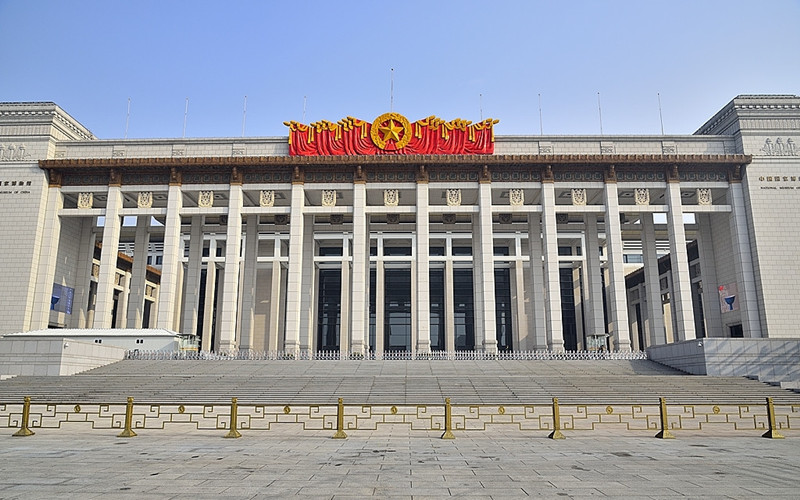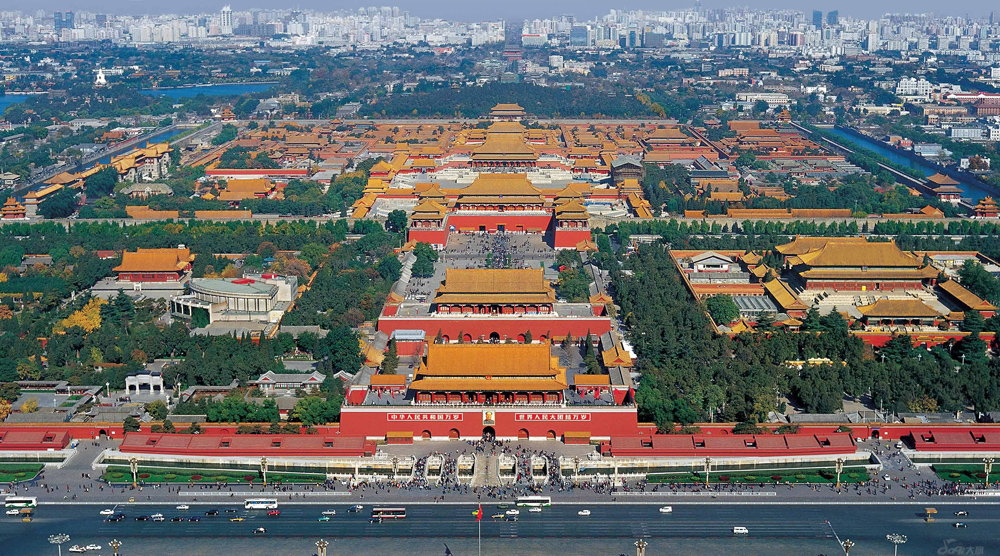
How to Plan a Trip to Beijing
Beijing is a captivating blend of ancient imperial heritage and modern urban life. Its enormous Forbidden City palace (nearly 10,000 rooms) was the Ming/Qing dynasties’ seat of power and stands as a priceless witness to Chinese civilization. The city’s cultural symbols – from world-renowned Peking duck dining to the bustling Silk Market for souvenirs – are as iconic as its historic sites. For travelers, Beijing offers everything from historic alleyways (hutongs) and imperial monuments to lively shopping areas and green parks, making it a perfect destination for those seeking both freedom and local convenience.
Seasons in Beijing: Weather & Best Time
Beijing has four distinct seasons, each with its own character. Spring (March–May) is generally mild (daytime highs 15–20°C) but can be windy and dry. Early spring may see dust storms or occasional rain. Blossoming flowers and green parks make April–May lovely for sightseeing (just watch for windy days). Summer (June–August) brings hot, humid weather (often 30°C+), with most rainfall concentrated in July–August. It’s a good time for lush scenery and outdoor activities in the mornings, but afternoons can be stormy and crowded (and air conditioning is a boon). Autumn (September–November) is widely regarded as the best season to visit – sunny blue skies, comfortable temperatures (15–25°C), and fall foliage. The crisp air and lower humidity make exploring monuments and parks very pleasant. Winter (December–February) is cold and dry. Average highs hover just above freezing and lows often dip below –5°C. Days are sunny but chilly; the Great Wall and parks wear light snow beautifully. (Tip: Beijing’s famous Cherry Blossom Festival in late March/early April or Golden Week holiday in early October see more crowds.)
Best time to visit: Generally, April–June and September–October are ideal for mild weather. Avoid major holidays (e.g. May Day in early May, National Day in first week of October) to beat the crowds.
-
Spring (Mar–May): Cool/windy early spring, warm by May. Gardens bloom (e.g. cherry blossoms in April), but watch for sand/dust.
-
Summer (Jun–Aug): Hot (30–35°C), humid, with heavy afternoon rain showers. Good for enjoying lush parks and night markets, but pack sun protection and an umbrella.
-
Autumn (Sep–Nov): Clear, cool weather (10–20°C) with golden foliage. Perfect for hiking the Great Wall and strolling city sights.
-
Winter (Dec–Feb): Cold (often below 0°C), dry air, occasional snow. Few tourists and festive Spring Festival lights, but bundle up!
Historical and Cultural Attractions
Beijing’s history is reflected in its grand heritage sites. The Great Wall (长城)(a UNESCO World Heritage monument) stretches thousands of miles; Ming-era sections near the city (like Mutianyu慕田峪) are well restored for day hikes and stunning mountain views. In the city center, the Forbidden City (故宫紫禁城) is the world’s largest palace complex, with halls, courtyards and treasures that tell the story of China’s emperors. Nearby, Temple of Heaven(天坛) is a spacious park where Ming and Qing emperors once prayed for good harvests – its iconic circular Hall of Prayer for Good Harvests epitomizes Chinese temple design.
-
Forbidden City(紫禁城): The former Ming/Qing dynasties’ imperial palace, with nearly 10,000 rooms. Exploring its vast courtyards and halls is a must.
-
Temple of Heaven(天坛): A UNESCO site of majestic altars and gardens where emperors held rituals. Covering 2.7 million m², it’s even larger than the Forbidden City.
-
Great Wall(长城): One of the world’s most famous landmarks. Take a cable car or hike at sections like Mutianyu or Badaling for panoramic views.
-
(Other cultural sights: Beihai Park (ancient royal garden, one of China’s oldest imperial parks, the ritzy Tiananmen Square(天安门), and traditional hutong(胡同) alleys for a glimpse of old Beijing.)*
Culinary Delights
No Beijing tour is complete without savoring its food. The city is famous for Peking Duck(北京烤鸭), a roasted duck with crispy skin and tender meat (a Beijing specialty for over 400 years). Try it at classic restaurants (e.g. Quanjude or Dadong) with scallion pancakes and plum sauce. Equally important are Beijing’s street snacks: wander snack streets and night markets to sample treats like jianbing(煎饼) (savory crepes), tanghulu(糖葫芦) (candied fruits), or even adventurous skewers (Wangfujing Snack Street is known for skewered fried scorpions and other exotic bites).
-
Peking Duck: A legendary Beijing dish with crisp skin. Presented carved tableside (often with Mandarin pancakes and sweet bean sauce).
-
Street Food and Snacks: Bustling markets (Wangfujing, Ghost Street) offer grilled lamb, dumplings, lamb skewers, and quirky eats (fried scorpion skewers included!).
-
Local Dishes: Try Beijing-style zhajiangmian(炸酱面) (noodles with fermented soybean paste and pork) and baozi (steamed buns). Street-side soy milk or fruit stands are great for breakfast.
Food markets and eateries are plentiful. Don’t miss sampling the diverse fare at local markets or historic food streets (like the old Wangfujing Snack Street). For a fun experience, join a walking food tour with a guide who can explain Chinese dishes (in Mandarin/English) and take you off the beaten path.
Shopping Experiences
-
Silk Market (Xiushui): Bargain-hunt here for silk scarves, custom tailoring, electronics and Beijing souvenirs. Learn basic haggling phrases in Chinese to get good deals.
-
Sanlitun(三里屯) (Taikoo Li): A modern open-air mall district in Chaoyang. Taikoo Li Sanlitun hosts international brands, tech stores and trendy boutiques, alongside a lively bar and restaurant scene. A favorite with expats and young travelers for shopping by day and nightlife by night.
-
Traditional Markets: Panjiayuan Flea Market(潘家园旧货市场)is famous for antiques, jade, calligraphy and cultural crafts. Donghuamen Market(东华门市场) and small hutong shops in areas like Nanluoguxiang sell local snacks, crafts and tea.
Whether you want high-end fashion or handcrafted souvenirs, Beijing’s shopping areas cater to every taste. Towering malls near the CBD (Guomao) are great for air-conditioned comfort, while traditional markets and hutong lanes offer more authentic finds.
Natural Attractions and Outdoor Activities
Beijing also offers ample green space and scenic escapes. The Summer Palace (UNESCO World Heritage) is the sprawling imperial lake and garden complex northwest of the city. Covering 290 hectares, it’s called “the Museum of Royal Gardens”. Stroll the Long Corridor by Kunming Lake, ride a boat, and admire the ornate Longevity Hill Tower (pictured) – it’s a serene break from the city hustle.
-
Summer Palace(颐和园): Vast imperial garden with palaces, pavilions and a lake. Known as China’s largest preserved royal garden, its hilltop terrace offers great views (see image).
-
Jingshan & Beihai Parks(北海公园): Two historic parks near the Forbidden City. Jingshan Park sits atop a hill (the highest point in central Beijing) for panoramic Forbidden City vistas. Beihai Park (Northern Sea Park) is over 1,000 years oldwith a beautiful lake and White Dagoba pagoda.
-
Fragrant Hills (香山): A forested park west of the city, famous for maple-colored leaves in autumn. Hiking trails lead through wooded hills to pavilions and temples.
-
Yuyuantan Park(玉渊潭公园): Known for its cherry blossoms in spring. A large park centered on a lake – it’s crowded during the annual Cherry Blossom Festival (March–April).
-
Hiking & Outdoors: Beyond city parks, nature-lovers can hike in the Beijing municipality’s mountains (for example, trails starting near the western Great Wall sections or Baihuashan). Summer hikes on the Great Wall or in Olympic Forest Park are also popular.
With Beijing’s extensive parks, there’s always a nearby natural spot for strolling, picnicking or a jog. In the south (near Yuyuantan) and west (Shidu, Fangshan) are larger reservoirs and karst landscapes for a day trip if you crave rugged outdoors.
Practical Tips for Your Trip
Length of Stay: Beijing is huge – to see the highlights, plan at least 3–4 full days. A short city-break (2–3 days) lets you cover top sites (Forbidden City, Temple of Heaven, Great Wall day trip). A longer stay (5–7 days) allows a more relaxed pace, extra museums (like the National Museum or 798 Art District), and perhaps a short trip to neighboring attractions (e.g. Xi’an or Hangzhou).
Getting Around: The Beijing Subway is fast, clean and covers most tourist areas. It has over 24 lines and 523 stations across 880 km of track, often the quickest way to beat traffic. Taxis are plentiful and inexpensive by international standards; using a ride app (Didi) or calling for a cab at night is safe. Central attractions (Tiananmen, Wangfujing) and some hutong areas can be explored on foot, but distances add up. Expect heavy traffic at peak hours; plan some buffer time. Bicycle-sharing is available around the city (e.g. Mobike), and many parks have bike rentals for scenic rides.
Where to Stay: Choose a neighborhood that fits your plans. Wangfujing/Dongcheng: A historic downtown area, vibrant and convenient. Many mid-range and luxury hotels line Wangfujing Street, within walking distance of the Forbidden City and subways. Sanlitun (Chaoyang): Trendy and modern, with international hotels and nightlife. Good for shopping at Taikoo Li and dining at global restaurants. CBD/Guomao: East of the city center, a business district with high-end hotels and malls, close to the Olympic Park(鸟巢)(Bird’s Nest). Each area has English-speaking hotel staff, shops and restaurants. (For a taste of old Beijing, boutique guesthouses in Nanluoguxiang or Qianmen are charming options, though farther from major sites.)
Our Services: To balance freedom with convenience, our company offers fully customizable itineraries and bilingual (Chinese-English) guides. You can explore Beijing on your own timetable while having expert support. We provide 24/7 customer support (for any travel issues) and optional airport transfers so your trip starts and ends smoothly. Our planners can tweak your schedule – for example, include an evening acrobatics show or a family cooking class – and our guides handle all local logistics if you prefer.
Ready to make the most of Beijing? Plan for at least 4–5 days (or longer if you wish to extend to nearby cities). Use the subway for temples and museums, hop taxis for distant sites, and enjoy walking through historic quarters. With our flexible tours, you stay independent but never without help when you need it.
Ready to plan your trip? Leave your contact or send us an inquiry and our team will craft a personalized Beijing itinerary just for you. We’re here around the clock to answer questions and ensure your adventure is smooth and memorable. Let us handle the details – you focus on enjoying Beijing’s history, culture, cuisine, and scenery!























